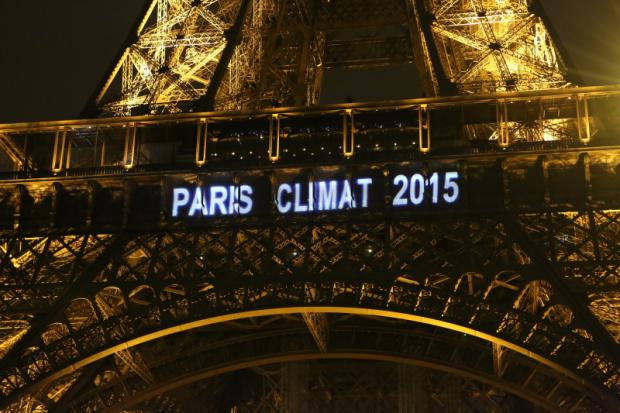On the Market: The Cost of Climate Change
There appears to be a cautious optimism growing in Paris as the Climate Change conference continues. Reuters reports that more than “150 nations arrived in Paris for the United Nations climate talks,” and that expectations are high due to the increasing global temperatures, and rising sea levels brought on by global warming. President Obama and Chinese President Xi Jinping agreed to work together during the Paris international talks to ensure the 21st century strives to be the greenest since the birth of industrialization.
In 2001 the US government made it clear that they believed the short-term economy could not handle a fight against climate change; they opted out of the 1997 Kyoto agreement. The threat of climate change did not frighten our government, nor a majority of the population. Despite many in the scientific community claiming that climate change is one of the greatest threats mankind faces today, many seem more concerned with tangible threats. PEW Research reports that less than half of Americans and Europeans (42 percent) see climate change as a “very serious issue.” The majority of countries that do see climate change as a leading threat to our existence are located in South America (61 percent) and Africa (59 percent).
In 2009, under a new administration, our government completely changed its position on the environment. US President Barack Obama said this in his Copenhagen Climate Council speech six years ago: “As the world’s largest economy and the world’s second largest emitter, America bears our share of responsibility in addressing climate change, and we intend to meet that responsibility. That is why we have renewed our leadership within international climate negotiations, and worked with other nations to phase out fossil fuel subsidies.”
Carbon emission in the United States reached its peak, of the past 25 years, in 2005. It has been on the decline since 2008. Since taking office, Obama has laid out a “Clean Power Plan” that would reduce America’s carbon dioxide emissions by 32 percent of what they were in 2005. According to the White House, not only will this plan protect American Health, “preventing up to 3,600 premature deaths” and “90,000 asthma attacks in children,” but it will also save American families “enough energy to power 30 million homes in 2030” and “save consumers $155 billion from 2020-2030.”
One might ask why all this matters. As stated earlier, many people do not see climate change as a threat because they feel it is difficult to see without the assistance of charts and graphs. That’s why according to PEW, 68 percent of Americans viewed ISIS as our most serious threat, and 62 percent viewed the Iran nuclear deal just as important. Not only are these two conflicts easier to visualize than global warming, they also one do not need the help of scientists to explain how dangerous they are.
It is easier to be apathetic about climate change because it does not have the same emotional pull as terrorists; it is far easier to focus fear on a threat that actually has a body. That is why it’s important to present climate change in a way that can generate a reaction out of the most people: discussing how much it can lighten their pockets. The White House website shows that storms like Superstorm Sandy cost our country $65 billion. Hurricane Isaac was another $23 billion. Wildfires, droughts, and heat waves across the West have cost our economy over $31 billion dollars since 2012.
As the Paris talks continue, the world will have to patiently wait and watch as leaders from over 150 countries debate the value of its fate. Passing legislation for short-term solutions will no longer help. Whatever restrictions are created from this council will have to be honored in the fight against climate change. We may not be able to afford paying for the symptoms of neglect much longer.
The information has been obtained from sources considered to be reliable, but we do not guarantee that the foregoing material is accurate or complete. Any opinions are those of Goldfarb Financial and not necessarily those of RJFS or Raymond James. This material is being provided for information purposes only and is not a complete description.

